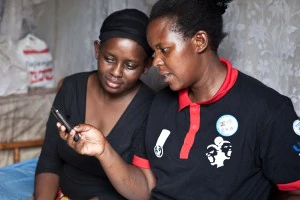New actors using technology creatively keep popping up in the financial services’ ecosystem: big platforms, neo-banks, local payment systems… The outcome is a host of new solutions and business models. How does a legacy company like Visa stay on its growth path in the new (Italian here) landscape?
Over its first 60 years Visa created a massive network that allowed us to manage the growth of the ecosystem—50 million merchants, over 16,000 banks, 3 billion cardholders. It was a close network, however, based on our hardware infrastructure and a common set of rules, waterfall development, twice yearly releases. Then, over the past 6 to 8 years we have seen exactly what you described: digital payments, new players, disruptive models, new technologies.
At the core of our strategy we moved Visa to become an open network providing to developers, new entrants and new models access to take the value of our network. Firstly, we moved our core services from the hardware to the APIs we created, because that is the first of partners ask. Our partners could be Alipay, PayPal, Amazon, Facebook, Square; or very new startups working in areas such as biometrics or digital identification; or what we call issuing fintechs like N26, Transferwise, Starling Bank, etc. To be able to engage them, we built a network of innovation centers in London, Berlin, San Francisco, New York, Singapore. Now any new player or startup can go to the Visa developers platform, look at Visa’s payments APIs, and start developing in our sandbox.
Secondly, we turned our approach around — not waterfall but agile development, human centered design and design thinking at the core as opposed to product development.
Once we had these assets, the third part of our strategy was to address the way we think about the ecosystem, which is not anymore just about traditional banks, merchants, consumers. We have engaged also very young companies, big payment platforms and big marketplaces that are developing. We have also developed a specific program for what we call issuing fintechs or neo banks, those that want to issue cards. In Europe that is 300 opportunities. In our new venture program, we earmarked a $100 million to invest in fintechs in Europe over the next five years.
Then we enlarged what we called Digital partnerships, that is, we moved from just working with the big platform players, where we started five or six years ago—Apple, Google, Facebook, Amazon. In the past 5 to 6 years we have seen a lot of changes that drove us towards being open, having a broader set of partners, being able to move quickly and changing our models to be more flexible as new players come into the ecosystem.
The players connected to the Visa ecosystem abide also by your security and trustworthiness standards. Out there, however, fintechs keep mushrooming. How big is the risk that this shadow banking system spirals out of control?
Consider first this fundamental shift. I am old enough that I put cash into my bank account in a physical branch, those first $20 that the bank recorded in a paper book. I got a credit card before I got a debit card, because debit wasn’t invented yet. So my financial services journey was banking to payments, like everybody’s until 7-8 years ago, which is the opposite of what we said before. We have flipped that journey on its head. People start with payments and then, they may or may never ever have a traditional banking relationship.
That has been a fundamental mind shift changer or cultural and societal change: we went from banking to commerce to commerce to banking. So we now provide commerce tools, wallets, virtual accounts for people that are not banked in a traditional way.
I don’t know if the term shadow banking system is the right one, but it is true that we now have a virtual commerce system that moves farther and farther away from the traditional way that we think about banking.
As to the second part of your question, I would say that regardless if it is banking to payments or payments to banking the same principles around security of the network, soundness, protecting customers and issues like KYC (Know Your Customer) or money laundering or terrorism, apply by regulation to the smallest of fintechs as they do to the banks. The banks may have a higher compliance burden because of the volumes of money that they loan, the complexity of their licenses, the many markets they are established in, their legacy infrastructure, but everybody that comes into this space is bound by the basic rules that provide security and soundness of payments. We are a very strong proponent of that.
Nonetheless, if not else, because to regulate you need to understand how those new business models work, the regulation framework could not be a level playing field for fintech startups and legacy companies…
Both payments and financial services regulations depend on the market. Take Europe. There is no denying that as a result of the strong customer authentication (SCA) requirement, the PSD2 is adding challenges and complexities and an additional burden on the payments ecosystem. We are working very hard with our banks and merchants to be sure that in September 2019 when the new part of PSD2, EMV 3-D Secure (or EMV 3DS), comes into force, the consumer experience isn’t damaged, and people can still conduct e-commerce.
We got to respect the regulation and get the balance of security, which is part of our customer authentication, and still provide a seamless consumer experience. So we are working with all the players, whether the smallest neo bank or biometrics technology company or HSBC or Amazon, because we don’t have two versions of our network depending on who you are: it has to be robust no matter what is happening. We think about this asset alike whether you consume it through API or you have a hard-line connection to Visa: it is seven nines reliability, tremendous investments in cyber security and always available.
The new emerging financial services—and here I am mostly thinking the unbanked—have engaged by now millions of people. Where is the opportunity is there for a global company like Visa?
emerging financial services—and here I am mostly thinking the unbanked—have engaged by now millions of people. Where is the opportunity is there for a global company like Visa?
I just met with Safari’s M-Pesa and with a cellular network out of Myanmar. They are close loop, but like Orange Money in Africa, which we have already worked with, they are starting to connect people with commerce. We are talking people who don’t have anything close to a bank account, but do have a source of funds tied to their phone number. They manage their financial lives through their phone and cash-in/cash-out networks.
When these people get more wealth or their needs become more sophisticated or they want to travel or cross borders or conduct ecommerce, invariably they come to Visa, because we can provide them with connectivity to the financial ecosystem—by putting a virtual Visa, or a physical, card on it, so that now that individual can use that source of funds on the phone for e-commerce or to go to an ATM as opposed to an agent we. We have been working more and more with these close loop wallets, particularly through our offices in Singapore and Dubai, from which we cover East and West Africa and Southeast Asia. The Visa card we provided to the very successful close loop Orange Money in Tanzania is now very popular.
How does artificial intelligence fit into this picture?
AI is fascinating. When you tap your smartphone to make an NFC payment, Visa is looking back 3 to 5 years into your payment history, and using in real time a number of vectors—credentials on the device, if it is being hacked, if time of day, place and purchase amount at that place look familiar—to give the transaction a bank and fraud score between 0 and 100, and we do so for every transaction. We are talking here 65,000 transactions a second (trns/s), the ones we currently handle, but our network tests for over 100,000 trns/s.
And now 5G is on, on top of AI. What opportunities will this offer to your industry?
Payments have to happen in milliseconds and require very reliable data and very low latency, but need only very, very small pieces of data. Therefore we can use today’s 2G, 3G and 4G networks. We are moving from a 100,000 trns/s capability to 200,000 trns/s, and are ready to build this up to 400,000 trns/s. Over time we might need the 5G bandwidth.
5G is interesting. Take IoT (the Internet of Things): if 25 billion devices are really going to start communicating with other 25 billion, and many of them will want to do commerce, that will require high-availability, high-capacity, and low latency for all data. That is really what 5G is.
However, because of the huge spectrum it has, 5G is also going to allow applications that manage robots or private networks in factories, but many of those applications will want commerce functionalities as well. That is why we are watching 5G closely.
Some countries are favoring digital payments over cash for security and transparency reasons, and to fight crime. So, when do you see cash fading out?
Cash management is not just expensive, it can be dangerous. Most governments around the world like the transparency, the security and the immediacy of digital payments, but it will take time.
I’ll tell you a story. When Visa went public, ten years ago, our then CFO, Byron Pollitt, trying to convince investors stood up and said: “Visa’s been very successful, but let me tell you how big the opportunity now is: there is a $15 trillion cash opportunity that payments can displace globally, and that is just for consumer expenditure.” Ten years later, Visa has grown eight times in terms of transactions volume, and we have displaced trillions of dollars in cash. We are celebrating our 10th anniversary as a public company, and our new CFO, Vasant Prabhu, stands up and says: “There is still a long way—$ 16 trillion in cash—to go for Visa. So as successful as our network and other forms of digital payments have been, global wealth continues to grow. A lot of the growth in global GDP happens in developing markets, where there is a number of unbacked people. As fast as we are growing, cash is growing faster.”
In Europe, 2016 was the first year with more volume in digital payments than in cash. In many developing markets that will happen as well, but 10, 15, 20 years out. I think cash and digital payments will live side-by-side for many, many years. Over time cash will start to shrink, and digital payments to outgrow it. The best example is Sweden. Sweden will print this year, I think, only the equivalent of €16 million in currency, around 1/10 of what they would have printed five years ago. Cash will fade out over the next 15-20 years, but every country will have its own curve.



